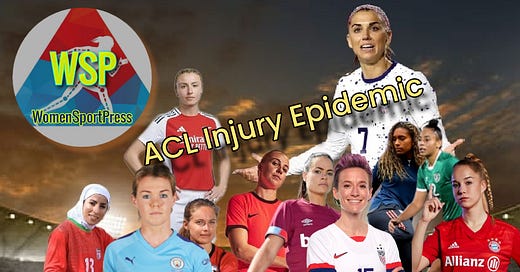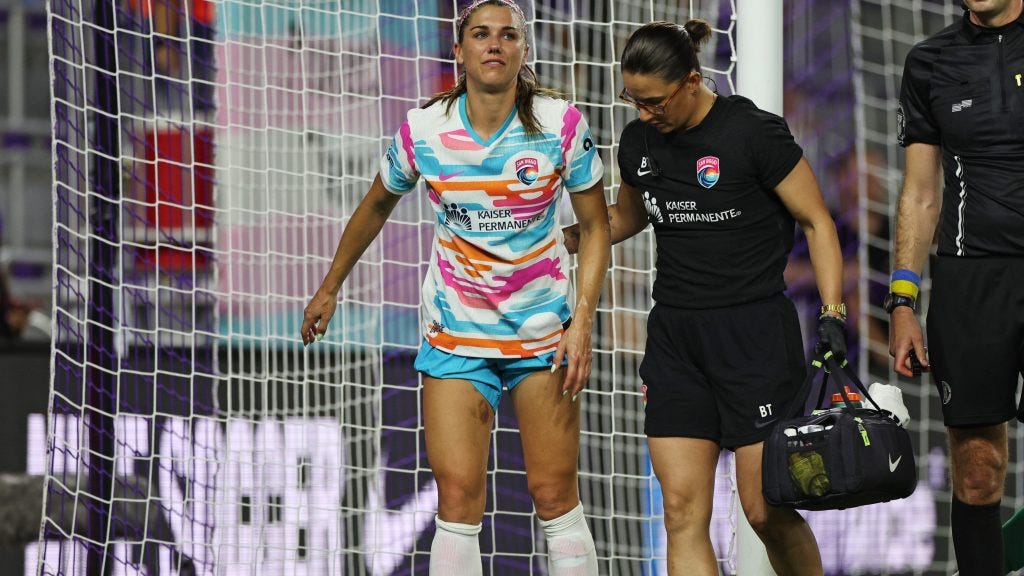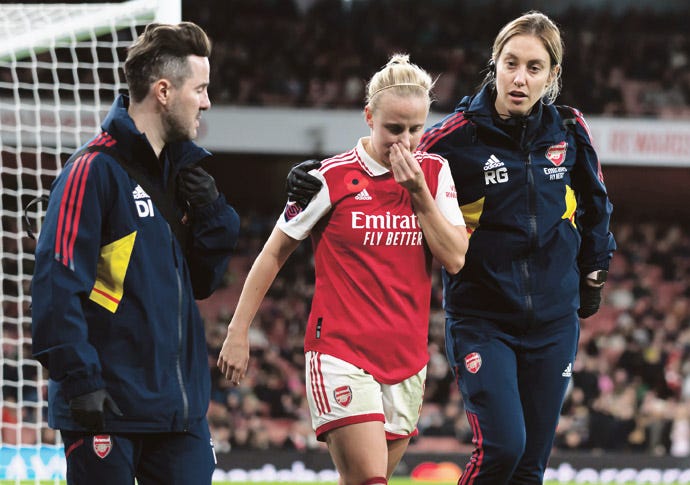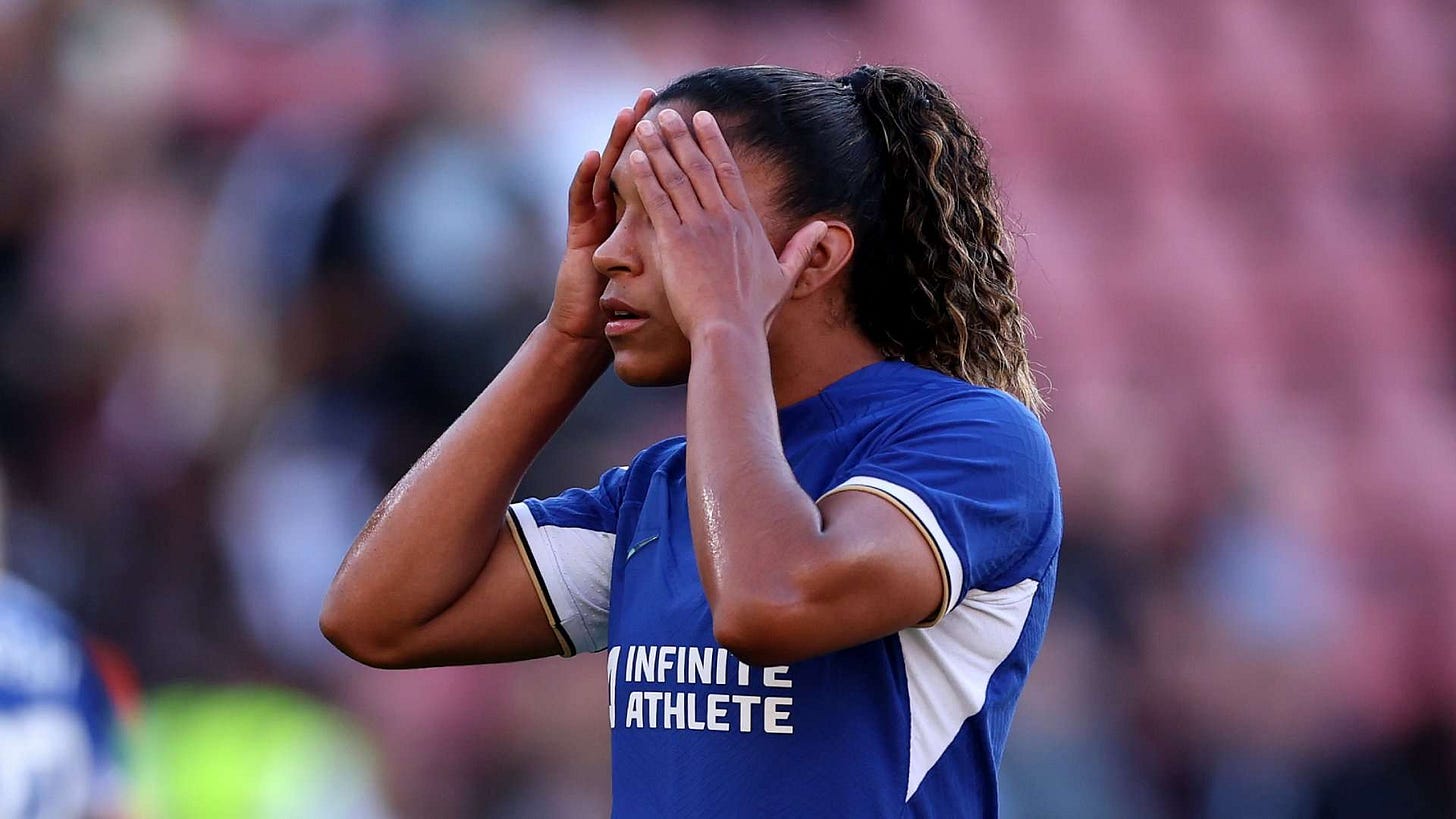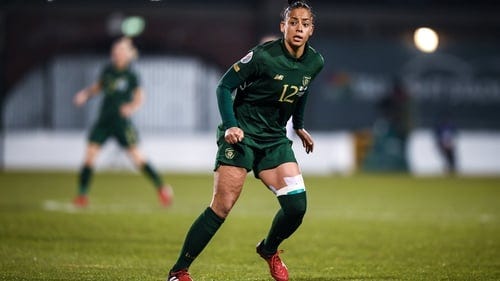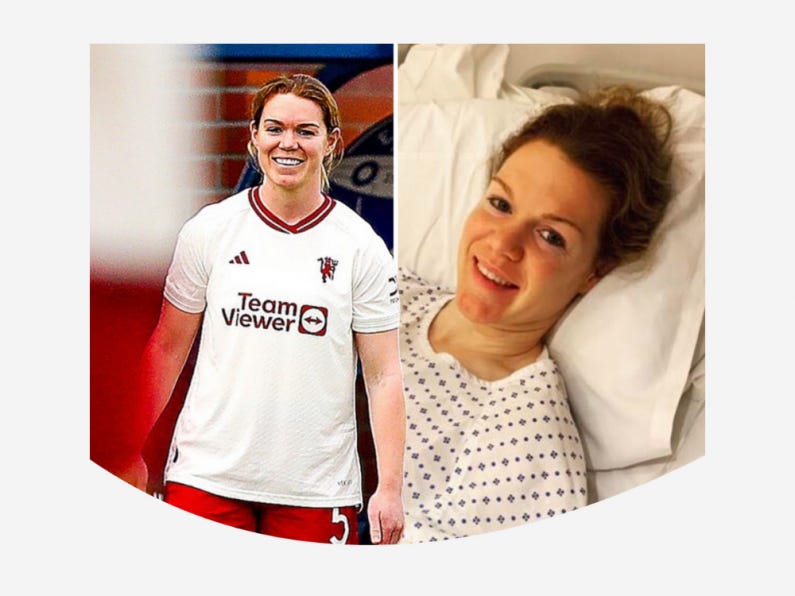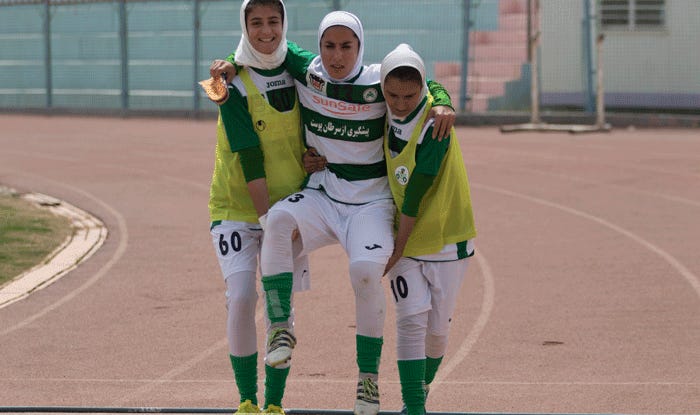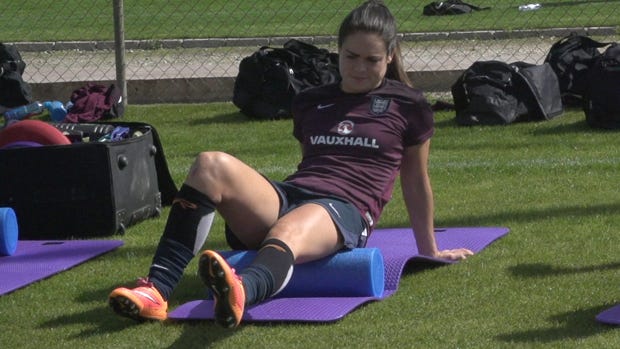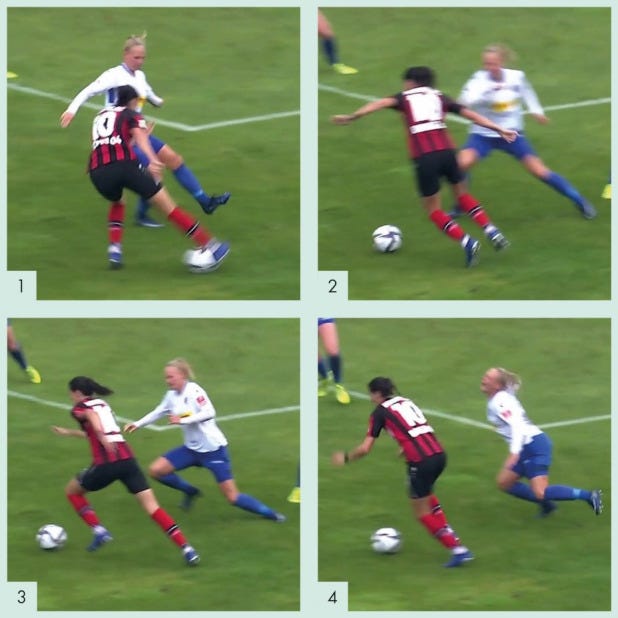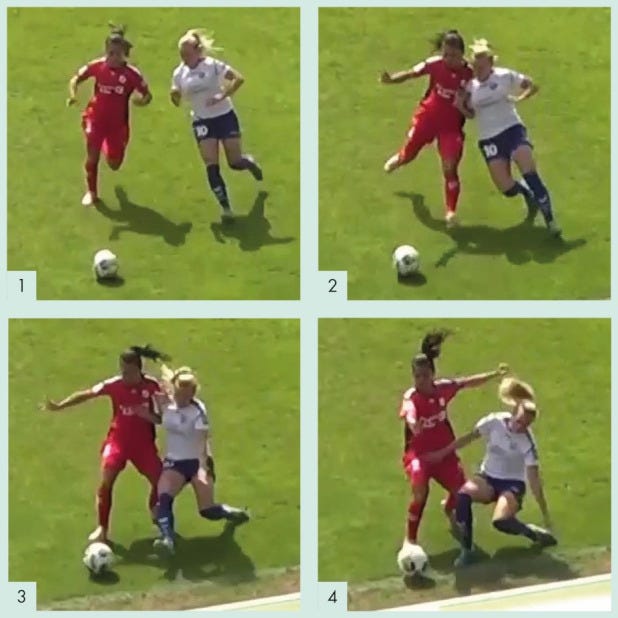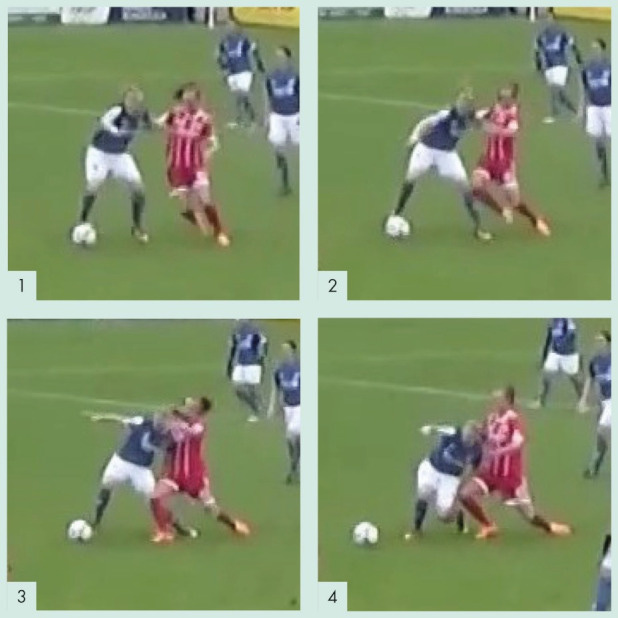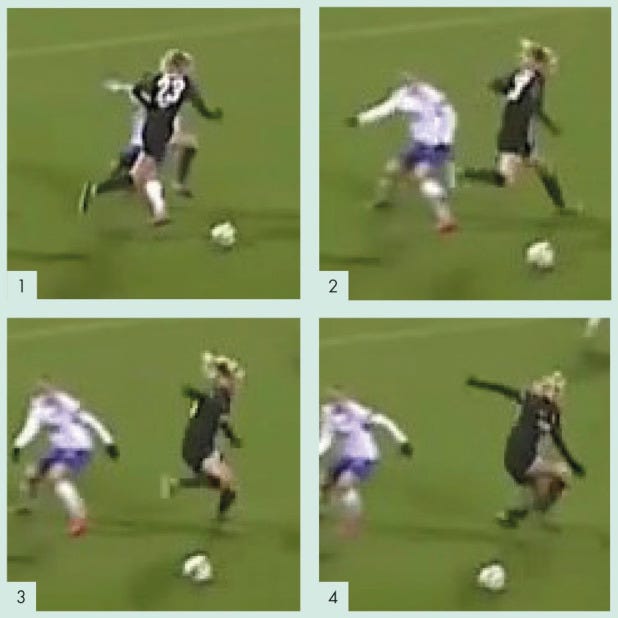ACL Injury Epidemic in Women's Football: Contributing risk factors in ACL Tear.
Mostafa Sarabzadeh---Sport Medicine Section WSP
Why Professional female football players are at high risk of an anterior cruciate ligament (ACL) injury? this is a question footballers and their sport physicians ask all the time. In the last two decades, the incidence of ACL injuries in girls has seen a major increase with incidences increasing from 0.06 per 1000 hours to 0.1–0.2 per 1000 hours, being 2–6 times higher than male athlete. In football the data is even more alarming since footballers are most likely to injure their ACL than any other athletes involved in sports, and nearly half of all ACL reconstructions in the UK were a result of playing football. The studies also show that female players are up to six times more at risk than males, with almost 30 missing the recent Women’s World Cup due to ACL injuries, and 373 confirmed ACL injuries since January 2022. At least 152 occurred in 2022, 165 in 2023 and already 54 in 2024, reported by @GUFC. This data has its own reasons and movement patterns applied in football is one of the main reasons. We know that soccer players cannot predictably plant their foot because they're getting jostled by an opponent while turning for the ball.
Whatever the injury's root, records show not all the female footballers are as lucky as Alex Morgan to undergo a reconstruction surgery when in the time of her high school and bouncing back later to become a World Cup Champion, Olympic Gold Medalist and Athlete of The Year. ACL injuries can put players out for anywhere between 9+ months, with some players even experiencing it as a career ending injury.
Leah Williamson, Euros-winning captains of the England women's national team who plays for Women's Super League club Arsenal, has been sidelined with an ACL injury for 369 days and missed Women's World Cup 2023, although it gave her enough and rewarding time to write and publish her first book. Leah is back now to the England squad and primed to play in Euro 2025 upon Sarina Wiegman’s Order.
The same happened to another lionesses star who also plays for Women's Super League club Arsenal and hold all-time most assists and all-time second-most goal contributions in the WSL , Beth mead. She was out for 334 days.
Catarina Macario, a brazilian-born player who plays for Women's Super League club Chelsea and United States national team, was out for two years, 638 days exactly. Catarina, after losing World Cup 2023 and Olympic 2024 as a result of her lengthy and exhausting recovery period, came back with scoring a goal in her first game back in March 2024.
Another shocking ACL injury story hitted Katie Rood, a New Zealander professional footballer who recently played for Hearts in Scottish Women's Premier League and the New Zealand national team, but found her world cup dream crashed and her club contract ended. But, a new start for her as a pioneer environmentalist working relentlessly on projects / campaigns to deal with climate and environmental crisis in sport.
We know that being an elite footballer is not always about winning the match but completing an injury-free season may be what footballers wish for more anything else. The dreaded pop of an ACL is not unusual for women soccer players, but three times is not what everyone can endure. However, someone who has been called inspirational by people and fans of Wexford Youths of the Irish Women's National League, and the Republic of Ireland women's national football team, has done it amazingly. Rianna Jarrett ‘s career disrupted by three separate ACL injuries at her 22, but she seemed far much more stronger than to let such injury stop playing for Ireland again, and netting her first international goal during her win over Ukraine in October 2019. Jarrett believes that ACL tear is linked to wider hip-bone structure women have, leading to more pressure at the knees.
Aoife Mannion, a centre-back of Manchester United in the Women's Super League and the Republic of Ireland women's national team, is another player suffered 3 ACL injuries during her career (first time lasted more than latter ones, 15 months). The last one ruled her out of the World Cup 2023, but as experts and coaches believe, her mindset, resilient attitude and ability to turn a negative into a positive did not allow her to give up on her way of returning to the pitch. Aoife is back now and playing football, feeling confident, technical, athletic, sharp and better than her past.
American soccer player, Megan Rapinoe, also tore her ACL 3 times during her career. Her case is another example that proved the recovery is likely, relapse is also very common. Despite all the daunting challenges on her way of recovery, incredible Megan never stopped doing all she could to turn pro, name an all-star team, represent her country to be an olympic gold and World Cup medalist. So, if you are a young footballer going through such injury, remember no one better than Megan’s experience can put you on the path as she knows what it is going to take to come back and how to answer questions like “ Is this going to be the end? Am I going to come back from this? Am I going to have pain forever? am I going to feel worth again ? ”
If you do not know how much worse and career-threatening this kind of injury might feel in developing countries with the least facilities provided for women athletes (picture speaks for it), reading Parvin Farhadi’s case, an Iranian Asian Cup Top Scorer, known as lovely 13 (her jersey number), who plays as a midfielder for the senior Iran women's national team, is enough. Having lost her ACL two times, one in her 19, and the second in her 25, an Ardakan-born Parvin returned to the pitch and continue shining through Persian Gulf Pro League, although the squad of Iran national football team have recently had no place for her. She found and has been leading one of the biggest women-only football academies in Shiraz, Iran, by the way.
The next one is someone we can call the king of the injury with 3 ACL ruptures, achilles tendonopathy, 2 epidural’s for bulging disks, and several hamstring tears that one nearly tore off the bone. “ I’m grateful to the injuries that I had, they allowed me to achieve so much in and out of the sport “, Claire Rafferty said. Legend Claire is a retired left back / winger for Chelsea in the FA WSL, Millwall Lionesses and West Ham United. The time of her shining though kick-started when a coach at Youth Level within the national set up told her that you’d never be good enough to play at Senior Level. But, in spite of all the set-backs, whether it comes from so-called coaches or different varieties of injuries, she always kept coming back to the sport stronger to end it with 2 League and FA Cup Winners Medals, a World Cup Bronze, and being an Olympian.
Giulia Gwinn, a German professional footballer, Best Young Player Recipient in World Cup 2019, who plays as a right-back / midfielder for Frauen-Bundesliga club Bayern Munich and the Germany women's national team, is another player suffered 2 ACL injuries in her career. As a result of the second one, Giulia sadly lost world cup 2023, even though she tried to return ahead of the tournament. However, she fully recovered and came back to the pitch stronger than before to make pursue her dreams of shining again in upcoming events.
Injury Biomechanics
Four common types of ACL injury
Pressing ACL injury: The blue-white player’s left knee was injured in this situation (Achenbach et al., 2024).
Parallel sprinting and tackling knee injury: The blue-white player’s left knee was injured in this situation (Achenbach et al., 2024).
Knee-to-knee injury: The blue-white player’s left knee was injured in this situation (Achenbach et al., 2024).
Landing ACL injury: The black player’s left knee was injured in this situation (Achenbach et al., 2024).
Regarding the risky movement patterns of women footballers, it is reported that 80% of ACL injuries occurred during horizontal movements such as sprinting, stopping, change-of-direction manoeuvres and lunging; only a small proportion of injuries resulted from vertical actions (landing and jumping). As reported by Horan et al. (2021), This may highlights the importance of the strengthening exercise programs focused on neuromuscular parameters involved in horizontal movements, rather than those activated during vertical movements.
Contact injury mechanism
Proportion of contact mechanisms for ACL injury during match. Contact mechanisms were divided into contact (dark green), indirect contact (light green) and non-contact (very light green). As shown, non-contact injuries accounted for the most part, as the total row of contact mechanisms shows 46% non-contact injuries, 38% indirect contact injuries and 16% direct contact injuries.
The figure also shows that contact mechanism did not differ between primary and secondary ACL injuries, although a non-significant trend towards a higher non-contact rate is seen in second ACL injuries.
Timing of injury and role of substitution

The figure illustrates that, when substitution was taken into account, the first period (0–15 min) showed the highest number of ACL injuries with significant differences to the second period (16–30 min) with 41% ACL injuries occurred during the first 15 min of the player’s individual match time.
High-risk Injury in Match or Training, in national or club games
Match injury incidence and burden were significantly higher compared with training in general, according to the Hallen et al. (2024), while higher incidence in national team matches compared to club competitions is reported (55.7 vs 19.5 injuries per 1000 hours) by Mayhew et al. (2021).
Conclusion
In conclusion, we can say that even with all these frightening data mentioned, Women football is still left behind in terms of funding and research for players’ safety. Further studies is needed to work on multifaceted compensatory or preventive approaches addressing all the contributing risk factors mentioned in this article as well as women football-specific movement patterns and the specific contact mechanisms of ACL injury-causing situations. Women football professionals have to know that it is not all about natural sex differences in physiology and anatomy, but also a multitude of other reasons.

